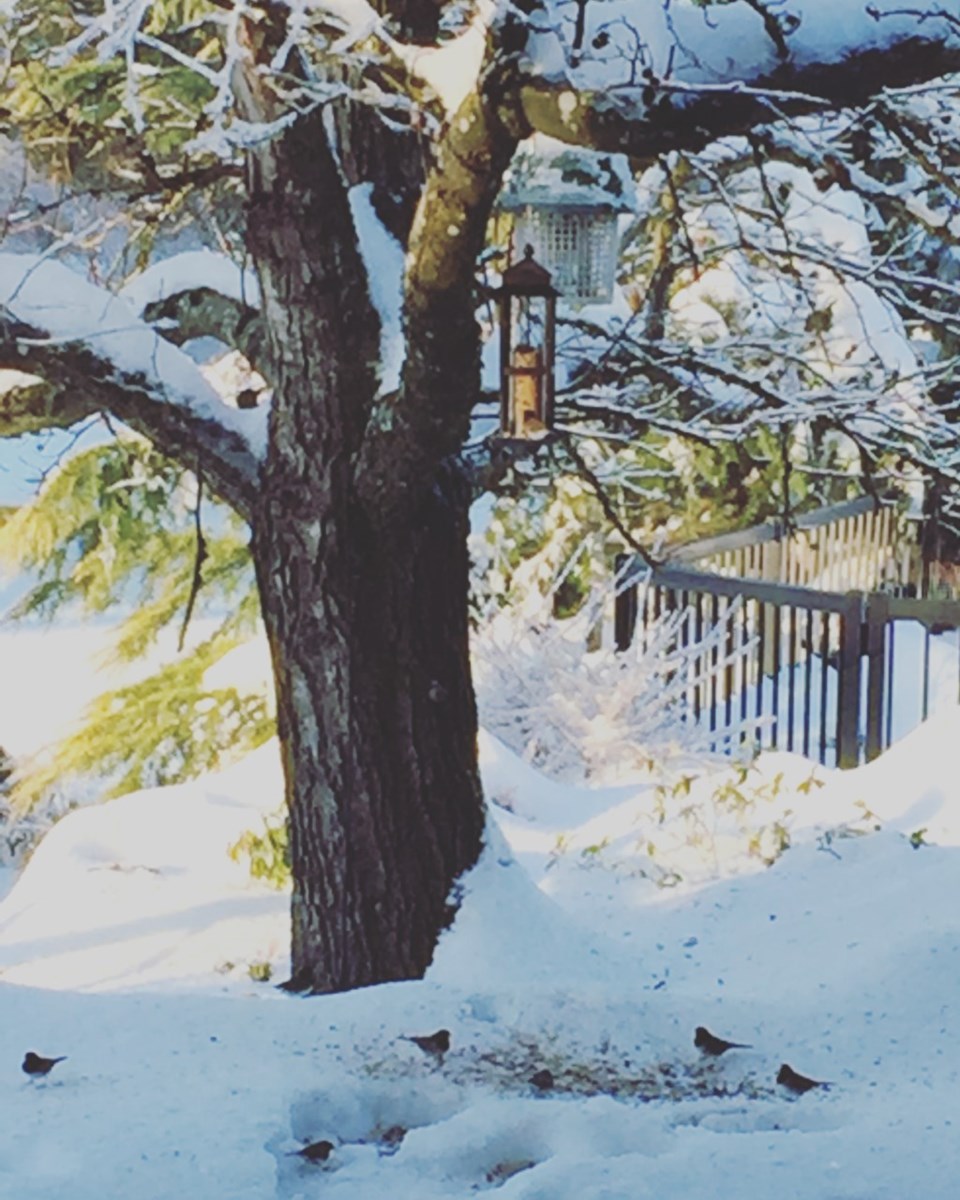The following column was submitted to the Tri-City News from Brian Minter — master gardener, best-selling author, Order of Canada recipient and co-owner of Minter Country Garden Store.
As we move into our second cold spell of the year, this is the time when many of us try to help our local birds by hanging a feeder somewhere in the yard and filling it with whatever bird seed we can find.
It’s a nice gesture, but if you are serious about attracting birds to your garden, there is a little more to it.
Many fine books are available on the subject of attracting and feeding birds, and fairly reliable information can be found on trusted Audubon websites.
This information will give you a broader perspective on the value of having birds around your home and some of their special needs.
Cleanliness and consistency are two of the most important necessities of a feeding station.
Mouldy, spoiled food can be dangerous to birds, and excess food spilled on the ground will attract rodents. Keep your feeders clean, and only put out enough food to last a few days, then refill.
It is also a good idea to rake the ground below the feeder and clean up any spilled food. Birds will not stay in one area if the food service is not consistent. Year-round feeding is a great idea, but even if you only do it during the winter months, don't allow the feeder to be empty for days at a time, especially during cold spells.
As well as setting out food, a garden planted with certain varieties of trees and shrubs will also provide additional and consistent food sources over the winter.
Berried plants that fruit, like pyracantha, cotoneaster and ornamental flowering crabapples, are a great source of winter food, as is English holly and deciduous Ilex verticulata. The seed pods of alder and certain dogwoods, like "Red Osier," and even winter flowering Cornus mas, offer a good supply of food. Believe it or not, the cones from mugho and Scotch pines, spruce and hemlock are food sources too.
Rose hips, particularly from some of the old-fashioned roses, are always a good backup resource.
As for purchased bird seed, the cheapest is seldom the best. If the birds just pick through it and scatter most of it uneaten to the ground, it is not much of a bargain.
Although there is no question that certain species prefer special seed types, the blend generally attractive to most wild birds is black oil sunflower seed and white Proso millet. Chopped sunflower hearts are one of the top treats that all bird species seem to enjoy; they eat every morsel. It’s interesting that most species have little desire for buckwheat, flax, oats, rice seed and wheat.
If you are going to purchase seed, you might as well get the stuff they eat.
During cold weather, birds need high energy food, and suet is among the best. Generally, beef suet is the tastiest (for birds), the least expensive and is sold in convenient packages.
Don't forget that birds have no teeth. Instead, they rely on fine particles of grit in their gizzards to grind up hard seeds. You can buy grit, but coarse sand will do fine. Just scatter some on or near your feeder.
Birds need water too. If you can keep an open source of water near your feeder, you will attract more than your share of birds. If you have a birdbath that quickly freezes up, you may want to purchase a birdbath heater. One lady told me that she uses fresh chopped apples as a source of moisture for birds — it’s not a bad idea. Bananas, blackberries, cherries, cranberries and strawberries are wonderful fruits for birds as well.
Secure your feeder in a location out of cold winter winds to protect the birds while they are eating.
It is also a good idea to locate feeders near thickets or bushy trees where they can dart quickly should a predator suddenly appear. Avoid reflective windows they might fly into. If you haven't done so before, try setting up a bird feeding station for the winter. Remember that various species feed at different height levels, so use ground feeders, six-foot-high feeders as well as ten-foot-high feeders to attract the largest number of birds. I think you will find it fascinating. Birds are some of our best garden allies, and it’s nice to provide another important source of food during the most challenging winter months.
Our Anna’s hummingbirds are here now too, and at this time of year, hummingbird feeders are very important. There are also heaters for hummingbird feeders to keep the liquid feed from freezing. Winter flowering plants, like sasanqua camellias and mahonia ‘Winter Sun’, provide the natural nectar they love.




